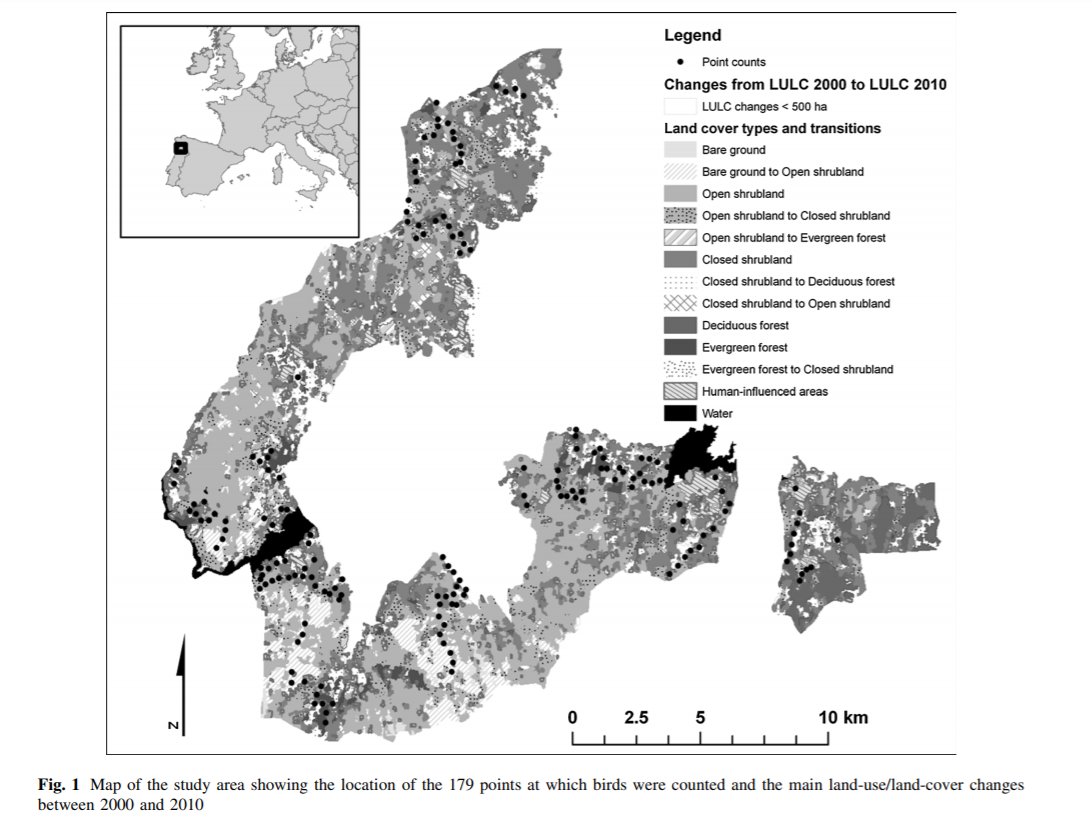Discover and read the best of Twitter Threads about #Rewildingscience
Most recents (24)
Today we're looking rewilding and animal-mediated seed dispersal in a paper that aims to identify areas and species in the Atlantic Forest to restore seed-dispersal interactions through rewilding
1/
#rewilding #rewildingscience
1/
#rewilding #rewildingscience

The authors start by explaining that as animal populations and species decline, the ecological interactions involving them are lost. Trophic rewilding his to restore these interactions through reintroductions or surrogate introductions
2/
2/
They say that certain types of animal interactions can be particularly beneficial, such as seed dispersal, which helps natural forest regeneration, creating more suitable habitat and a positive feedback loop
3/
3/
Prehistoric or historic? What is the best baseline for #rewilding in the Neotropics? @JCSvenning and @FaurbySoren investigate the previous distribution of megafauna to inform future options of trophic rewilding in today’s #rewildingscience thread 

Trophic rewilding – use of species to promote trophic cascades and self-regulating ecosystems often involves discussion around megafauna (large bodied species). Their high mobility, resitance to top-down effects, and ability to disperse nutrients makes them ecologically valuable
It is these species that have been subject to anthropogenic declines, including in the Neotropics. Historic baselines for species richness and distribution are now so intermingled with human effects that they may not represent a feasible point to base introductions on…
Kicking off the afternoon session of the #RewildingSymposium is @JCSvenning talking about 'restoring the role of megafauna in European ecosystems'
He begins by highlighting that current megafauna is unusually poor. Last at this level >30 million years ago. Historically, super diverse megafauna was the norm.
He points out that most current species are 100,000 to >1m years old. Meaning they have a complex evolutionary background with the landscape and complex ecological characteristics
1/ This week we end with the future directions of conservation paper by Jozef Keulartz (2016). #rewilding has varied forms, which rather than competing, can be complementary. Read this #rewildingscience thread and join in the discussion 

2/ Which historical baseline is used as a reference state is one of the central debates in #rewilding. This can depend on cultural and ecological context of where rewilding takes place….
3/ It has been argued that historic baselines are irrelevant due to current anthropogenic drivers e.g. climate change making it difficult to recreate historical ecosystems. There are two thoughts; to abandon history entirely, or to move the baseline to a more distant past
1/ An exploration into the role of megafauna, ecosystem functioning and #rewilding is the topic of #rewildingscience today. Can we learn from the Pleistocene to influence today’s world for the better? 
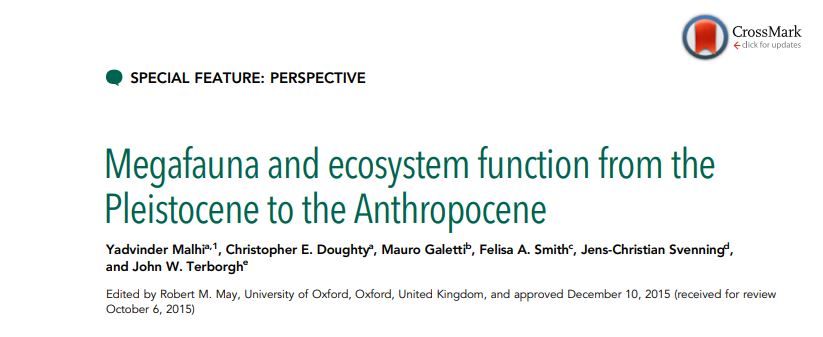
2/ As discussed in previous threads, megafauna have been in a state of decline and extinction since the late Pleistocene. Such large animals would surely have an impact on the environment so what are the consequences of their declines on ecosystem function?
3/ Understanding not only why they went extinct but how their loss effects ecosystem functioning is important for many reasons. Arguably the most pressing of which is how their legacy has an impact on the functioning of the current biosphere
1/ #Rewildingscience with rewilding as a new framework in management by P. Jepson (2016)
-People can experience ‘ecological boredom’ and show indifference to wildlife issues⬇️
-Rewilding embraces change around current management and reinvigorates 21st century #conservation⬆️
-People can experience ‘ecological boredom’ and show indifference to wildlife issues⬇️
-Rewilding embraces change around current management and reinvigorates 21st century #conservation⬆️
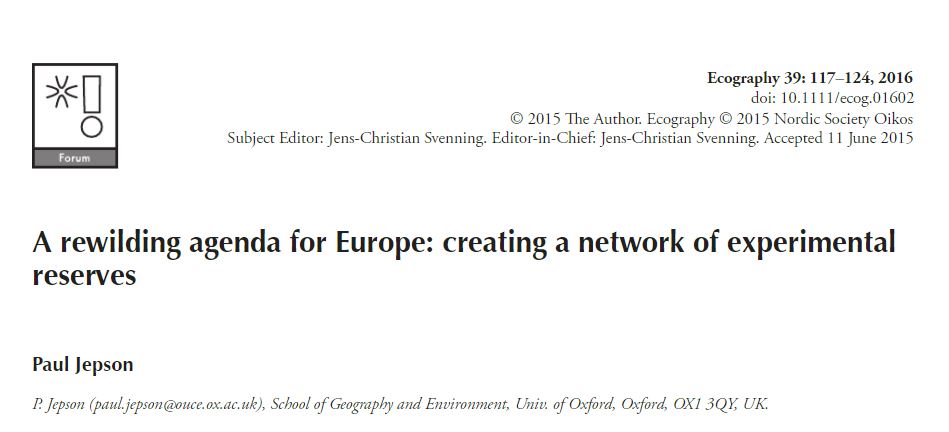
Today in #rewildingscience: Avian winners & losers of rural land abandonment (Regos et al 2016)
The study found
-An overall positive effect on biodiversity ⬆️
-13 shrubland & forest bird species showed an increase ⬆️
-4 ecotone & open-habitat species showed a negative trend ⬇️
The study found
-An overall positive effect on biodiversity ⬆️
-13 shrubland & forest bird species showed an increase ⬆️
-4 ecotone & open-habitat species showed a negative trend ⬇️

1/ Today we take a look at the key points from Arts, Fischer, & René van der Wal (2016) examination of the relationship between rewilding and reintroductions. onlinelibrary.wiley.com/doi/10.1111/re…
#rewilding #rewildingscience #reintroduction
#rewilding #rewildingscience #reintroduction
2/ Approach
Critically review the assumption that reintroductions automatically restore wild places.
by
investigating the relatedness of key concepts – ecological functioning, wilderness experience and natural autonomy in relation to a hypothetical wolf reintroduction
Critically review the assumption that reintroductions automatically restore wild places.
by
investigating the relatedness of key concepts – ecological functioning, wilderness experience and natural autonomy in relation to a hypothetical wolf reintroduction
3/ Results
The paper determined that:
Each concept was positively impacted by a wolf reintroduction
However...
The concepts often collide rather than enforce each other
The paper determined that:
Each concept was positively impacted by a wolf reintroduction
However...
The concepts often collide rather than enforce each other
1/ A debate on the approach of management and the distinction between anthropogenic and ‘natural’ landscapes is the topic of #rewildingscience today. This centres around the use of fire in peatland management and how we approach ecosystem understanding 
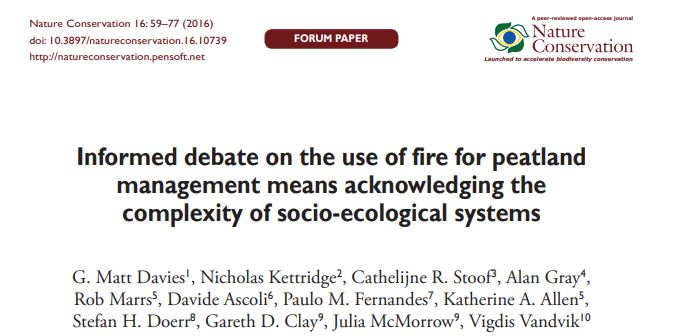
2/ The use of fire in peatland & heaths is steeped in political, social, and economic debate. Whilst it is difficult and, in some cases, inadvisable to tease-out these points from habitat management, it is important to conduct unbiased ecological assessments for certain practices
3/ Here, the authors aim to examine the trade-offs in land-management within peatlands/heaths. “choosing the ‘right’ ecosystem is difficult…in a landscape with a long history of human influence”. Whether that be #rewilding or a combination of practices is still being discussed
1/ A glimpse into Pleistocene park for todays #rewildingscience tweet thread with the article “Born to #Rewild” by Eli Klintisch. This short article delves into the process and thoughts behind the attempts to re-establish the grassland-dominated ecosystem – the mammoth steppe 
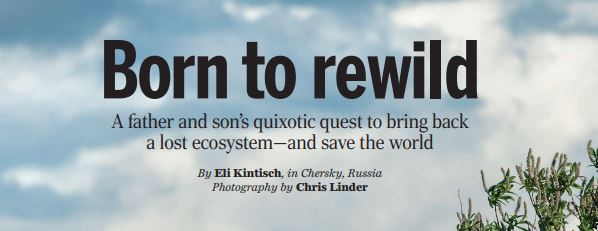
2/ In the mid-90s, Sergey Zimov founded the Pleistocene park, a 14,000-hectare reserve near Chersky. The intention was to test whether large herbivores, such as, elk moose, reindeer, horses and bison – through grazing - could bring back the mammoth steppe landscape
3/ This biome dominated Northern Eurasia and North America for 2m years until the last glacial around 13,000 years ago when it shifted to mossy tundra. Why Zimov felt the need to re-establish this landscape lies in its carbon-trapping properties
1/ We’ve broken with tradition a little today. After last week’s paper ‘Rethinking Rewilding’ got a positive reaction, this week we’re covering a response to that paper by Prior and Ward (2016) #rewilding #rewildingscience 

2/ Rather than go over last week again, you can check out last weeks thread here
3/ Prior and Ward start by welcoming Jorgensen’s paper and emphasise their belief that the emergence of rewilding within both conservation and popular discourse means that social scientists and humanities scholar have a vital role to play in these debates.
1/ Todays #rewildingscience paper sees us take a look at Dolly Jørgensen’s Rethinking Rewilding which investigates how the term rewilding was adopted and modified in ecological scientific discourse - sciencedirect.com/science/articl… #rewilding #ScienceTwitter 
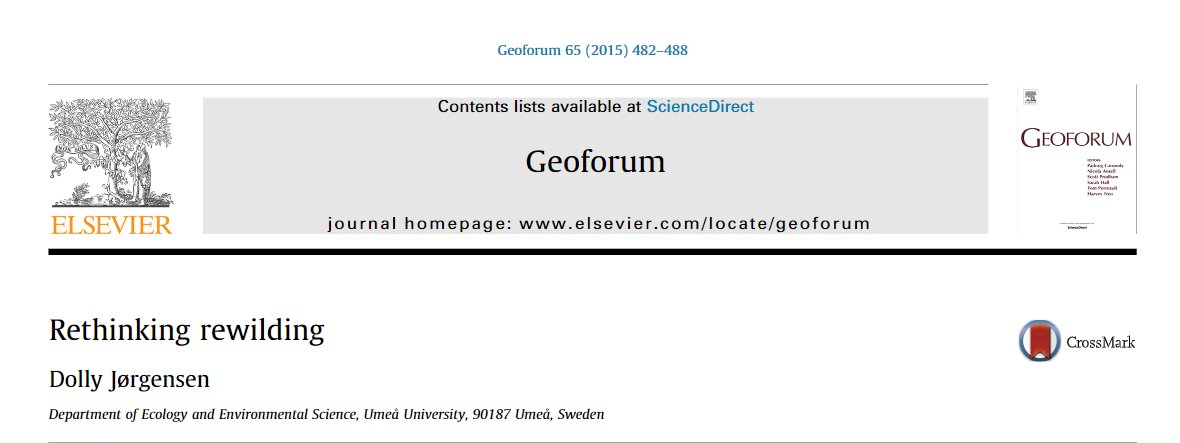
2/ The author starts by pointing out that the term rewilding has not come from nowhere and that ‘Wilderness’ as a conservation target, particularly in the US, has a long history.
3/ The Wilderness Act in 1964 defined it as ‘an area where the earth and its community of life are untrammeled by man’, yet wilderness was also a ‘resource’ for human use.
1/ Today’s #rewildingscience paper concerns the shifting traditional landscapes in southern Spain. Acha and @HelenNewing1 explore the decline of cork oak landscapes and the options present to either halt their loss or facilitate something new. Could #rewilding be the answer? 

2/ Cultural landscapes, like those dominated by cork oak are in decline in the Iberian Peninsula due to a shift in usage from traditional maintenance and demographic changes to either agricultural intensification or land abandonment
3/ The cork oak landscapes historically represent a good example of traditional agroforestry systems and silvo-pasturelands where a mix of tree-stands, crop rotation, and live-stock grazing has led to multi-level systems that support the local community and biodiversity
1/ Ecological #rewilding has been proposed as an alternative to halting farmland abandonment. Mapping different factors and opportunities for rewilding on land projected to be abandoned are explored in this paper with #rewildingscience this week 

2/ Multiple factors including changes in technology, productivity, and markets have led to agricultural abandonment. In Europe cropland has decreased by ~19% from 1950-2010, whilst pastures and semi-natural grasslands have decreased by ~6%
3/ Despite this some of these areas still hold strong/ecological importance. The protection of these habitats under European policy focuses on extensive farmland, alongside CAP providing subsidies for traditional agricultural practices
1/ Modelling indicates that large areas in North and South America and Eurasia have suitable climate and habitat for #rewilding with wild-living horses. #rewildingscience paper by Pernille Naundrup and @JCSvenning in @PLOSONE 
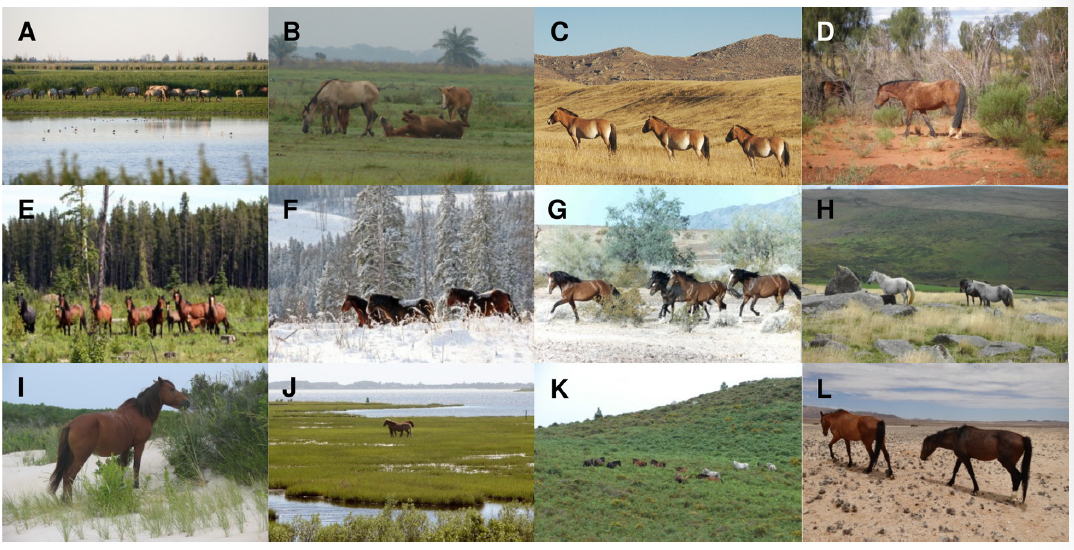
@JCSvenning @PLOSONE 2/ The scene is set by highlighting the dramatic loss of the biggest animals across much of the world in the last ~100,000 years, with evidence suggesting humans were an important cause.
@JCSvenning @PLOSONE 3/ This loss has fundamentally changed the way many ecosystems work and look! e.g. Big animals can influence vegetation community structure and diversity, long-distance seed dispersal, nutrient cycling and much more!
1/ in today’s #rewildingscience thread we’re looking at the popular use of the term ‘Anthropocene’. Like many terms this paper found that term has many divergent points of use across Terrestrial, Marine and Atmospheric discourse and warns that against a totalising use of the term 

2/ The papers goal was to investigate the transformation of recent environmental thinking and environmental ethics and in particular the language of “the Anthropocene” which is prominent in driving it.
3/ The author explains how contemporary American land management philosophy suggest that management goals in a “new conservation science” need to focus “beyond naturalness.” Naturalness, this new approach suggests, has simply lost its value as a management guide
1/ in today’s #rewildingscience paper we look at Lansanta et al’s 2015 review. Which brings together arguments for and against control or naturalisation of abandoned farmland #rewilding #agriculture #farmland 
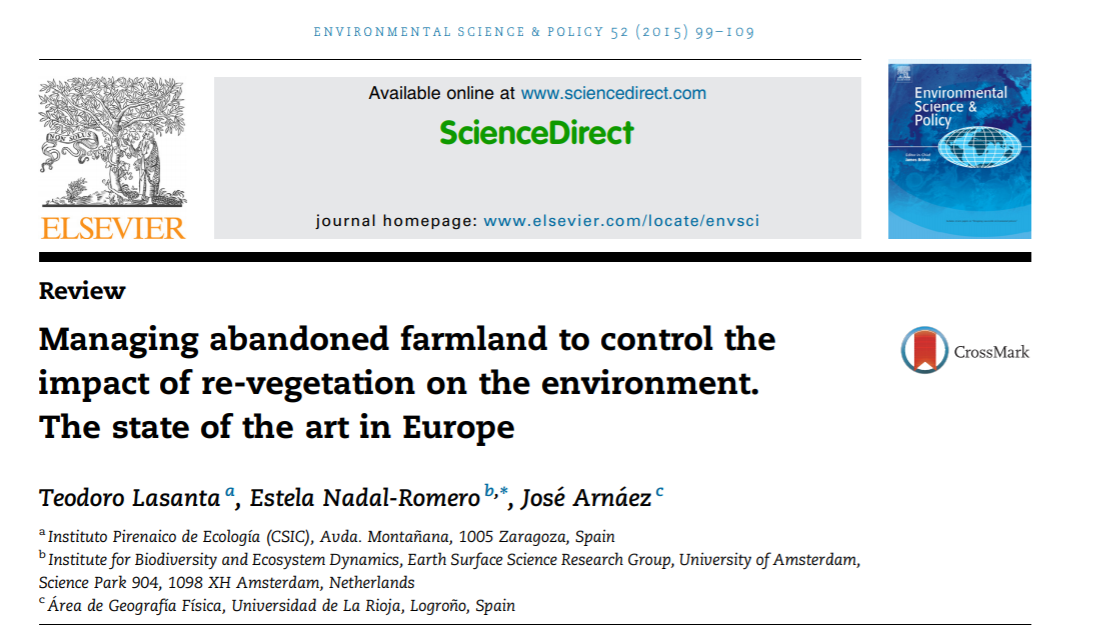
2/ Most visibily this agricultural abandonment leads to revegetation of land through secondary succession. The paper highlights how this process has the potential to reduce soil erosion, increase biodiversity and create carbon sinks.
3/ Conversely, it can also reduce many semi-natural, open habitats that were formerly maintained by traditional land management, causing significant impacts on the landscape, biodiversity, the ecosystems dynamics and landscape sustainability
1/22 #rewildingscience's second paper of the week brings us back to the question of what constitutes natural and how #rewilding could hold the answer to classic conservation issues. @Nature_Based and @Puttypaw explore UK habitats and what constitutes ‘natural’ in today’s world 

2/22 What does ‘natural’ mean? Looking to water vole populations in Britain, this can be interpreted in different ways. Having thrived for ~10,000y, since the 30’s their numbers have reduced to 2% of their original size…
3/22 This is due to habitat loss and predation by introduced non-native American mink. Research has gone into how to conserve the water vole population using pre-30s levels where they would thrive without human intervention. In the paper 3 options for such conservation are listed
1/22 #Rewilding and agriculture is a highly debated topic, but what if we stretch it even further to include the crops themselves? In this #rewildingscience Palmgren et al explore rewilding with crops, reverse-breeding hardy varieties with the added benefits of modern cultivars 

2/22 current agricultural practices have been developed over the past 10000 y to feed >7 bn people, however projections suggest that a rising global population will not be sustainable without some innovative thinking
3/22 Expansion of agricultural land brings us back to issues of ecosystem health, driving towards solutions of ‘sustainable intensification’ that incorporates biodiversity. A potential solution could be modern biotechnological techniques, but GMOs remain a controversial issue
1/ Today’s #rewildingscience paper recommends a 2 tier agricultural subsidy scheme for the EU. 1 Tier focused on promoting intensive but sustainable farming on productive/fertile land and the other Tier supporting #rewilding of large low productivity areas for biodiversity. 

2/ The authors begin by challenging the idea that agriculture is essential for maintaining biodiversity in Europe. Low-intensity farming is characterised by high levels of biodiversity, and the perception is agricultural land abandonment will result in the loss of biodiversity.
3/ The authors highlight that while alpha diversity (the diversity of species at a particular site) of low intensity farming can be very high (high numbers of species on meadows) compared to natural forest, it is biased towards specific groups of species.
1/ Can trees grow in Oostvaardersplassen (OVP)? This experimental study reported that no planted saplings survived when unprotected. But protected trees in pre-grazed/rooted areas had higher survival. Trees need grazing refugia. #rewilding #rewildingscience 

2/ Large herbivore effects on vegetation structure is well studied in Europe but on managed rather than rewilded land. ‘An unanswered question is to which degree rewilding with large herbivores can form wood-pasture landscapes on productive abandoned agricultural lands?’
3/ “S. factors are known to affect sapling survival. 1) browsing and trampling by large herbivores limit sapling survival, esp. at high herbivore densities. 2) light competition with herbaceous plants can limit sapling survival, particularly in the more productive ecosystems.
1/ To end the week, we’re going a bit off-piste by reviewing a paper that looks at rewilding in organic farming by using biotechnology to introduce genes of wild relatives into crop plants to boost productivity as well as support nature. But its controversial #rewildingscience 
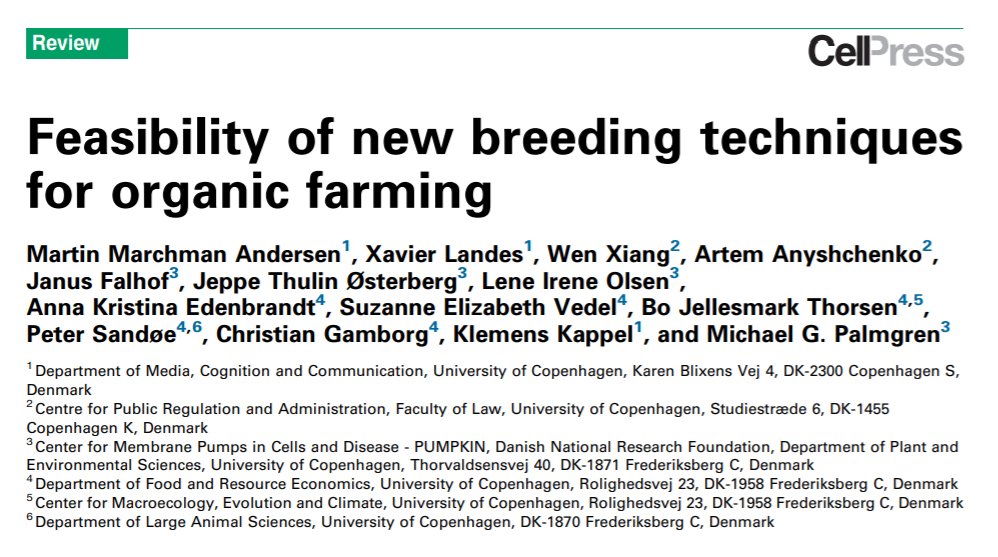
2/ The paper explains that organic farming aims to work ‘with nature’ by mimicking processes in natural ecosystems for the provision of nutrients and pest control, instead of relying on chemical inputs, compared with conventional farming. However it is less productive
3/ Certain forms of biotechnology are considered irreconcilable with organic agriculture, such as genetic engineering’ However, the papers proposes that as technologies evolve, it is not obvious that all forms of technology should be deemed incompatible with organic farming
1/ Its a Beetle day in todays #rewildingscience paper review. As we look at the response of Beetle communites to forestry abandonment in the Eastern Alps. The paper sheds light on some of the benefits for invertebrate communites that reduced management can have #rewilding 

2/ Understanding the role of forestry in changes to biodiversity is crucial in applying conservation measures. This paper investigated whether changes have occurred in species richness, abundance and composition of beetle communities due to cessation of forest management
3/ Ten managed and ten abandoned forest plots in two watersheds located in the north-eastern Italian alpine region were surveyed, sharing a common history of use, climate regimes, stand structure and topography.
1/16 Does the introduction of novel species to assist in ecosystem functioning have a place in modern #rewilding? In todays #rewildingscience paper @DennisMHansen puts forward his argument for non-native megaherbivores to combat island plant invasion 
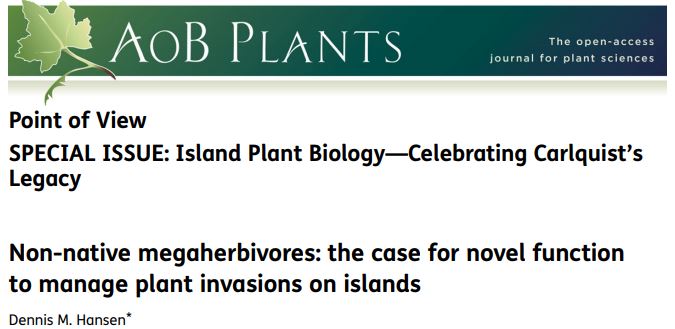
2/16 Note: In the context of the paper ‘megaherbivore’ is used to refer to both the extinct giant tortoises and introduced counterparts due to their role as ecosystem engineers on island habitats
3/16 Island ecosystems are disproportionately impacted by invasive species (plant or animal). Removal of mammalian species have shown to assist in native plant recovery whilst loss of herbivores can lead to surges in invasive plants where they were previously held in check


